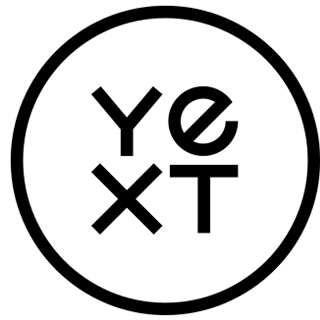Comment prendre de l’avance en matière de migration cloud
Personne n'aime déménager. Devoir démonter ses meubles, trier ses affaires et s'installer dans un nouvel endroit est une tâche qui peut en décourager plus

Yext
oct. 7, 2021

Nobody likes moving. The process of tearing down existing setups, sorting through your things, and setting up in a new place is daunting.
But then you have a fresh start — one that serves your needs in ways that your previous situation couldn't. There are mental hurdles and immediate costs to get over, but it's an investment in the future.
Migrating your company's data is no different. For larger companies that have terabytes and terabytes of information, tied to custom-built internal platforms, the idea of successfully moving everything to the cloud seems as plausible as attaching hundreds of balloons to your house with the hope that it'll just float away to a better place with everything intact.
Many businesses choose to embark on that journey, though, in spite of the upfront barriers. What's far less preferable is when there's no choice; i.e. a migration is forced upon a business, say, by a service provider. These mandates can have well-meaning intentions based on the very merits of moving to the cloud — but the issue is timing. They often leave businesses with shorter windows to plan their migration in thoughtful ways.
And so, the best approach is to get ahead of it — even when there may not seem to be an immediate impetus. That's the nature of being proactive.
Businesses have their reasons for keeping data environments on premise, either internally or with a service provider. Let's go through some of these common reasons, and see how relevant they are in 2021.
"But we can't trust the cloud!"
It can be difficult to accept the notion that anyone else will look after your data more carefully than your own team and company. Setting up a walled garden, with visibility into any and every data interaction, can seem like a safe play.
We're not here to contend otherwise. Every business's demands are unique.
What we will contend, though, is that security on third-party cloud platforms has taken enormous strides in the past decade.
When most people think about the cloud, they think of files, and companies like Amazon, Google, Dropbox, and Box have led the way there in meeting the needs of regulated industries, from HIPAA to SOC 2 compliance. The same goes for your search platform, where moving data into a Knowledge Graph is one of the first steps to building a smart, AI-powered search experience. At Yext, we're proud to have achieved SOC 2 compliance, prioritizing the security of our customers' data.
Another factor is usability. When employees and customers alike can intuitively retrieve the right information — like using AI search or, say, a Dropbox folder — they have fewer hoops to jump through and, by extension, that makes things easier on IT teams. Because usability is an input in your security equation. You can create an environment that you have 100% control over, but if users have to attempt workarounds to find or share information, that can lead to inevitable cracks in the so-called walled garden. What you may be left with is 100% control, but over just 75% of use cases. Security models are only more powerful when users are happy — and compliant.
"But our needs are so unique — we need our own custom environment."
The contention here is that in-house teams are best-equipped to construct customized setups for a particular business. But service providers like Yext have very intentionally built flexible platforms that allow for customers to create their own adventure. The very basis of a Knowledge Graph is to be a brain-like database for an entire business's content library, and creating custom entities from which to pull.
Are you a healthcare provider, and want to add new Locations and pair that with specific Professionals or Procedures? You can do that with a Knowledge Graph. Or maybe you're a financial institution, and have specific FAQs that cater to customer personas. A Knowledge Graph is a blank canvas to shed light on all the pertinent topics and categories of information for customers and employees to access. Rather than using index-based keyword search platforms that only scan for individual words or phrases, AI Search is built on a business's own unique Knowledge Graph.
Ten years ago, cloud platforms may have not been able to keep up with nuanced demands of each and every customer. But, in 2021, the very identity of cloud-based content platforms is to be versatile and customizable.
"OK, fine. But this is all going to take a long time, right?"
Naturally, any change is going to come with transaction costs. But much like moving homes with the help of professional movers, service providers often have teams committed to assisting and ensuring the migration and deployment happens quickly and seamlessly. With Yext, customers have access to implementation specialists who hold your hand throughout the entire transition process, getting you all moved out and moved in in a matter of weeks, not months. All interests are aligned: setting customers up with comprehensive Knowledge Graphs feeds into the efficacy of AI Search, and make brands more successful with Yext.
And that legwork is a one-time, upfront investment. Yext Answers, inherently a SaaS platform, is built for scalability and future-proofing for the changing customer needs.
In summary, migrating from on-premise to the cloud isn't anyone's idea of fun, per se. But it may be time to revisit some of your prior concerns about the cloud and SaaS offerings, which have matured greatly over the years. Further, revisiting the conversation on your own terms can make the process that much more palatable.
And if your business is in a migration-related pickle, Yext is here to help. Contact us today.